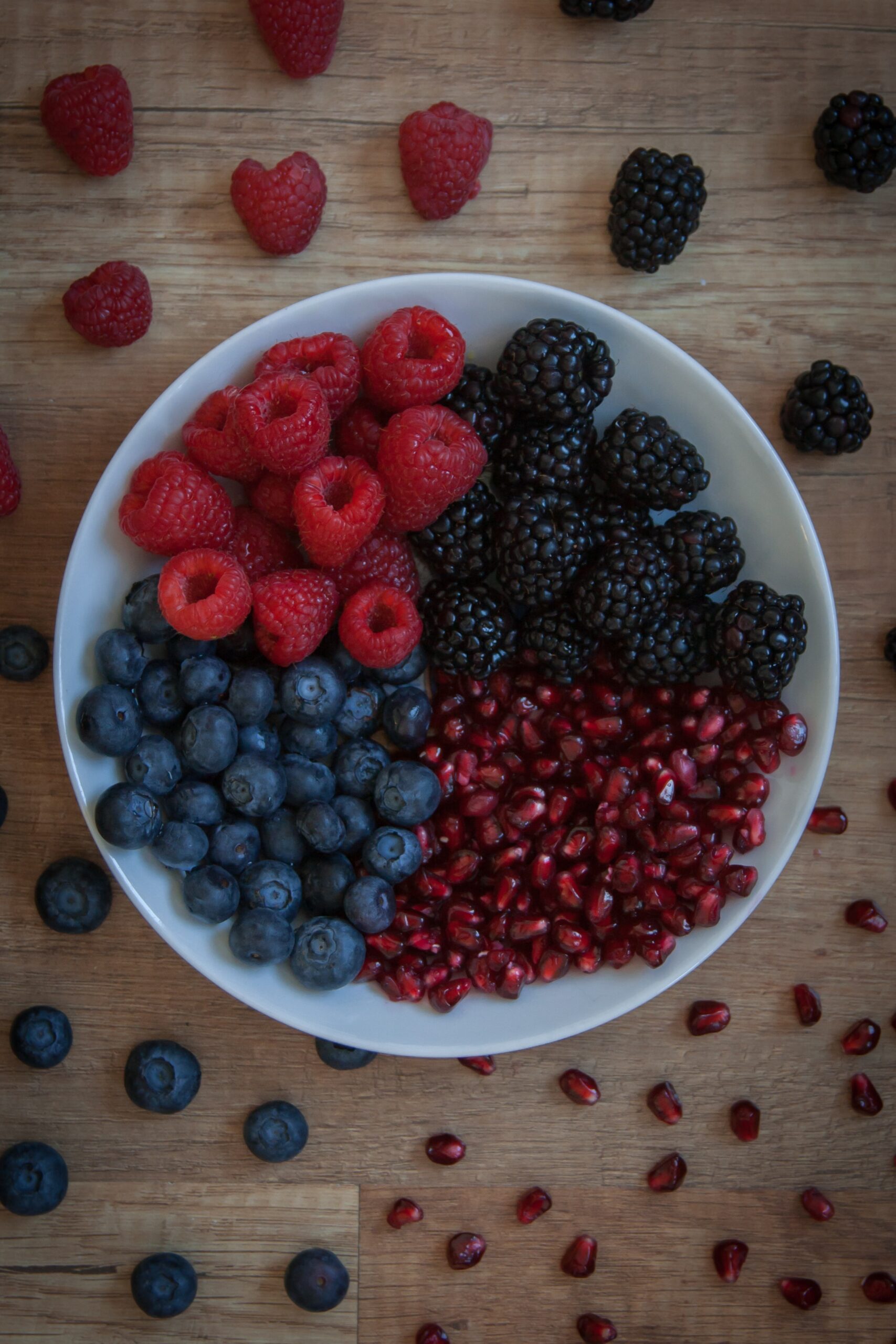Peanut butter and jelly…pasta and tomato sauce…rice and beans – what do these duos all have in common? They’re popular food combinations that many of us have encountered at some point in our lives. But how does the way we combine foods affect our health? That’s exactly what the concept of food combining explores!
Food combining is the idea that how we pair foods plays a major role in our health. We’ll explore several schools of food combining, including:
• Synergistic Food Combining: How nutrients interact to amplify their combined health benefits
• Ayurvedic Food Combining: Recommendations from traditional Ayurvedic medicine
• Functional Food Combining: An exploration of combinations that are best avoided
Some aspects of these philosophies overlap, but each has unique properties.
Read on to learn more!
SYNERGISTIC FOOD COMBINING
When it comes to food combining, we’re beginning to discover that some combinations actually enhance nutrient bioavailability. In other words, eating certain foods together boosts the nutritional value of the individual foods! This concept is often referred to as nutrient synergy because these foods work together synergistically to enhance their combined nutritional benefits.
Many of these synergistic interactions are thought to stem from compounds known as phytochemicals. Phytochemicals are found in plant-based foods; they’re different from vitamins and minerals but may support health just as much.
While still in the early stages, research on these naturally occurring compounds already suggests they play a major role in reducing inflammation, boosting immunity, slowing the spread of tumor cells, and protecting the body from chronic disease. It’s also recently been found that phytochemicals can interact with each other and different vitamins and minerals to synergistically boost their combined health benefits.
Synergy: The combined power of a group of things when they are working together that is greater than the total power achieved by each working separately
Here are some examples of synergistic combinations:
TURMERIC + BLACK PEPPER

Turmeric contains a powerful phytochemical called curcumin, which is prized for its powerful anti-inflammatory properties.
Black pepper contains piperine, a compound shown to have an anti-cancer effect.
While turmeric and black pepper are healthful on their own, when combined, curcumin’s bioavailability improves by 2,000%!
Tip: Add both spices to curries, eggs, and salad dressings for a nutritional boost.
BROCCOLI + TOMATOES

Broccoli and tomatoes are both nutritious foods high in vitamin C; together, they become even more nutritious. In fact, a study on prostate cancer found that when broccoli and tomatoes were combined, tumor weights decreased by 52%, significantly more than when broccoli and tomatoes were consumed on their own. Tomatoes contain a phytochemical called lycopene, which is also shown to have a cardio protective effect.
Tip: Cook tomatoes in olive oil to increase lycopene bioavailability.
GREEN TEA + LEMON JUICE

Green tea is a great source of antioxidants and has been shown to boost brain function and help protect the body from cardiovascular disease. Much of green tea’s beneficial effects are attributed to being a great source of catechin, a phytochemical. When lemon juice is added to green tea, it can help increase the bioavailability of catechins by up to five times!
Tip: Other citrus, like lime and grapefruit, may have a similar effect.
LEMON + SPINACH

Vitamin C has been shown to increase the absorption of plant-based iron sources, so pairing a bit of lemon juice with a plant-based iron source, like spinach, is a nutritional win!
Tip: Other similar combos include red pepper and lentils, cauliflower and tempeh, and Brussels sprouts and sesame seeds.
ROSEMARY + GRILLED MEAT

Meat cooked on the grill and exposed to direct high heat can create heterocyclic amines (HCAs), which may increase the risk of cancer.10 But adding a bit of rosemary can reduce the formation of HCAs significantly.
Tip: Add rosemary to your next marinade or rub for this benefit.
KALE + AVOCADO

Fat-soluble vitamins A, D, E, and K need fat to be absorbed properly. The monounsaturated fats from avocado can help boost the absorption of vitamin K found in kale. Another example that pairs a fat-soluble vitamin with a fat source is sweet potato (vitamin A) and Greek yogurt.
Tip: Fortunately, some foods naturally include fat that may help boost nutrient absorption, including salmon (vitamin D), egg yolks (vitamin D), and sunflower seeds (vitamin E).
SALMON + BOK CHOY

Vitamin D helps boost the absorption of calcium – both necessary to support bone health. Combining a vitamin D source, like salmon, with a calcium source, like bok choy, will help enhance calcium absorption to support strong bones and reduce the risk of osteoporosis.
Tip: Mushrooms can be a plant-based source of vitamin D!
The concept of nutrient synergy helps highlight that when it comes to our diet, sometimes the whole is greater than the sum of its parts. Different foods can work together to boost nutrition, and many combinations have yet to be discovered. In fact, the whole foods you already include in your diet may be synergistically helping to reduce inflammation, boost immunity, and support vibrant health.
AYURVEDIC FOOD COMBINING

Ayurveda, or “science of life,” is an ancient healing system that supports health through balancing energies. Foods, activities, seasons, and even times throughout the day all have different energies. When energy is balanced, it supports health, but an imbalance of energy can lead to illness. Ayurvedic food combining is rooted in supporting this balance.
According to Ayurveda, “When diet is wrong, medicine is of no use. When diet is correct, medicine is of no need.” In this case, a “correct” diet refers to one that helps balance an individual’s condition through the types of foods eaten, the ways they’re prepared, and how they’re combined.
Specific combinations of food are thought to have a negative effect on agni, or “digestive fire,” leading to poor digestion and leaving the body prone to disease and disorders.Other food combinations have a more positive effect on agni, boosting health.
Strengthening Agni
To strengthen agni, Ayurveda recommends eating all the colors of the rainbow, including all six tastes, or rasas – sweet, salty, sour, pungent, bitter, and astringent – and combining food mindfully.
Each food in a meal brings its own qualities. For example, food is considered heating or cooling and either difficult or easy to digest. Certain combinations go well together based on their qualities as well as season, time of day, quantity consumed, nutrients, and similar rates of absorption. Ultimately, Ayurvedic food combining attempts to balance each quality in a meal so one doesn’t overpower another.
Here are some examples of combinations thought to strengthen agni:

Beans + Grains, Vegetables, Nuts, or Seeds
Tip: Make a grain bowl with beans, fresh greens, and walnuts or a bean carrot soup topped with pumpkin seeds.

Animal-Based Proteins + Vegetables
Tip: For a quick, nutritious dish, make a sheet pan meal with your choice of animal protein and cabbage wedges.

Starchy Carbs + Vegetables
Tip: Serve roasted sweet potato with broccoli florets, peppers.

Vegetables + Anything (Except Milk or Fruit)
Tip: If you like to pair vegetables with a cream sauce, experiment with making one from cashews or almonds.
Weakening Agni
Ayurveda suggests there are also multiple incompatible combinations based on a variety of factors, including how foods are processed, their potency, quantity, and the time and season they’re ingested.
According to the Ayurvedic perspective, not everyone will have a reaction to incompatible food combinations; in this way, it acknowledges bio-individuality when it comes to diet. However, certain food combinations are thought to weaken agni and contribute to disease and disorder over time.
Here are a few examples of foods thought to weaken agni:
Animal Protein + Starch

Tip: Instead of rice, place your animal protein on a bed of sautéed vegetables or cut it up and add to a vegetable soup.
Eggs + Dairy or Meat

Tip: If you like to add cheese to your eggs for extra flavour, play around with different spices instead. Consider cayenne, garlic powder, turmeric, pepper, or smoked paprika.
Starches + Fat

Tip: Top your baked potato with salsa instead of butter or sour cream.
Animal-Based Protein + Animal-Based Protein
Tip: For dishes where more than one type of meat is used, like meatballs, choose one and consider adding peppers to boost flavour.
Bananas + Milk

Tip: If you tend to include bananas and milk in your smoothies, consider swapping the milk for coconut water or a nondairy milk.
Beans + Cheese

Tip: When serving burritos or tacos, make cauliflower “cheese” or opt for vegetables instead of beans.
Fruit (Especially Melon) or Milk + Anything
Tip: Enjoy fruit on its own as a snack or have a glass of milk before bed.
Counteracting Incompatible Combinations
While improper food combinations may decrease agni, there are plenty of ways to help offset potential effects. Here are some Ayurvedic ideas for supporting digestion and boosting agni:
• Cook consciously: Consider the energy and intention you bring to foods you cook. Enjoy the process of creating beautiful food!

• Experiment with spices: For example, add cooling cilantro to spicy foods. Spices can provide digestive balance. Salt also supports digestion.
• Add spices and herbs that support your dosha – Vata, Pitta, or Kapha.
• Eat mindfully: Take your time and avoid eating with distractions. Tune in to how you feel before, during, and after eating.
• Chew food thoroughly: Proper chewing helps facilitate digestion.
• Drink room temperature or warm water: Stay hydrated between meals, and take small sips of water during meals.
• Have lunch be your largest meal of the day. This is the time when agni is strongest.
• Stop eating before you’re over-full. A helpful rule is to eat until you’re about 80% full.
• Avoid eating too close to bedtime. Sleep is the time for the parasympathetic nervous system (“rest and digest”). If you spend all night digesting, your body won’t spend enough time resting.
• Enjoy eating. Remember that pleasure is a valuable aspect of holistic nourishment!
• Create space for movement. Physical activity stimulates digestive processes.
Even though many of the recommendations to counteract incompatible food combinations are thousands of years old, they are still useful tips to help support gut health, maintain a healthy weight, reduce inflammation, and encourage mindfulness in the diet.
FUNCTIONAL FOOD COMBINING
Functional food combining is another form of food combining sometimes used in functional nutrition to help heal the gut and support weight loss. It’s a creative way to nurture and support digestion through whole foods and mindful food combinations.
Unlike nutrient synergy, which explores how foods work together to boost nutrition and support health, this version highlights which combos are best to avoid. Rather than working together, these foods are thought to work against each other when included in the same meal. This is mostly due to the rate at which each food is digested.
According to this theory, combining foods that break down at different rates may be a major source of digestive discomfort. Avoiding specific combinations may help alleviate bloating and gas, while optimizing metabolism and reducing digestive stress. For example, some nutrients, such as simple carbohydrates, digest quickly. Other nutrients, like proteins and fats, require more time to be broken down into fuel for the body.
Less Desirable Combinations:
While there are many versions of food combining from a functional nutrition standpoint, here are some combinations considered most taxing to the digestive system. Avoiding these pairings may help reduce digestive stress.
PROTEIN + STARCHES
Protein and starches included in the same meal may lead to suboptimal digestion. For example, dishes like meatballs and pasta or meat with rice could lead to bloating or discomfort.
Tip: Zucchini noodles and cauliflower rice are great non-starchy substitutes for protein-based meals.
PROTEIN + ACID
The combination of protein and acid is thought to be additionally taxing on the digestive system. Meats with acidic marinades or fish in an acidic sauce might lead to indigestion.
Tip: Swap seasonings, like oregano, basil, paprika, and cayenne, for the marinades and sauces.
MILK + ANYTHING
For optimal digestion, milk is considered best consumed on its own.
Tip: Consider nut, seed, or oat milks instead.
FRUIT + ANYTHING
Based on this theory, fruit shouldn’t be combined with other foods because it digests quickly. In addition, food combining recommends eating fruit on an empty stomach and considers it the perfect food for the morning.
Tip: Make banana “ice cream” by blending bananas in a food processor and putting it in the freezer!
Ideal Combinations
While the combinations above aren’t recommended in this theory, the following pairings are thought to be generally tolerated well.
Protein + Non-Starchy Vegetables:

Protein paired with non-starchy veggies is considered a winning food combo that can help ease digestive strain. This combination is also considered ideal as an evening meal. Here are some examples:
• Chicken + peppers
• Steak + green beans
• Tuna + broccoli
Fruit + Fruit:

Fruits are generally considered to combine well with other fruits, but melons – like watermelon, honeydew, and cantaloupe – are best enjoyed on their own. If you’re interested in exploring different combinations, here are a few ideas:
• Oranges + grapefruit
• Peaches + cherries
• Apples + pears
Nuts + Non-Starchy Vegetables:

Fattier foods, like nuts, combine well with non-starchy vegetables. A great way to try this is to add some nuts to a fresh salad or sprinkle them over a vegetable soup. Some other ideas include:
• Walnuts + arugula
• Almonds + cucumber
• Pistachios + Brussels sprouts
Starches + Non-Starchy Vegetables:

Starches pair best with non-starchy vegetables. Grains, beans, potatoes, and pumpkin are all starchy foods. Here are some examples of ideal combos:
• Brown rice + asparagus
• Sweet potato + green beans
• Lentils + cauliflower
Other Functional Food Combining:
Tips Food combining is about not only the types of foods combined but how those foods are eaten.
Eat “lighter” foods, like fruit, earlier in the day and “heavier” foods, like protein-rich dishes, in the middle of the day to best support digestion.
Functional food combining also recommends chewing food completely and getting enough water, exercise, rest, and sleep for optimal health.
COMBINING FOOD FOR HEALTH
Each school of thought around food combining has unique properties, but they all share the belief that foods should be paired mindfully to best support digestive health and overall wellness.
These may be interesting dietary frameworks to explore, but remember that you’re unique – bio-individuality plays a big role here! These strategies may help you further discover the diet that works best for you. You may find that some combinations work very well for you or you may learn combinations that you don’t tolerate as well.
Let me know what do you think about these food combinations and which one is your favourite.
Thank you for giving time to my blog!









